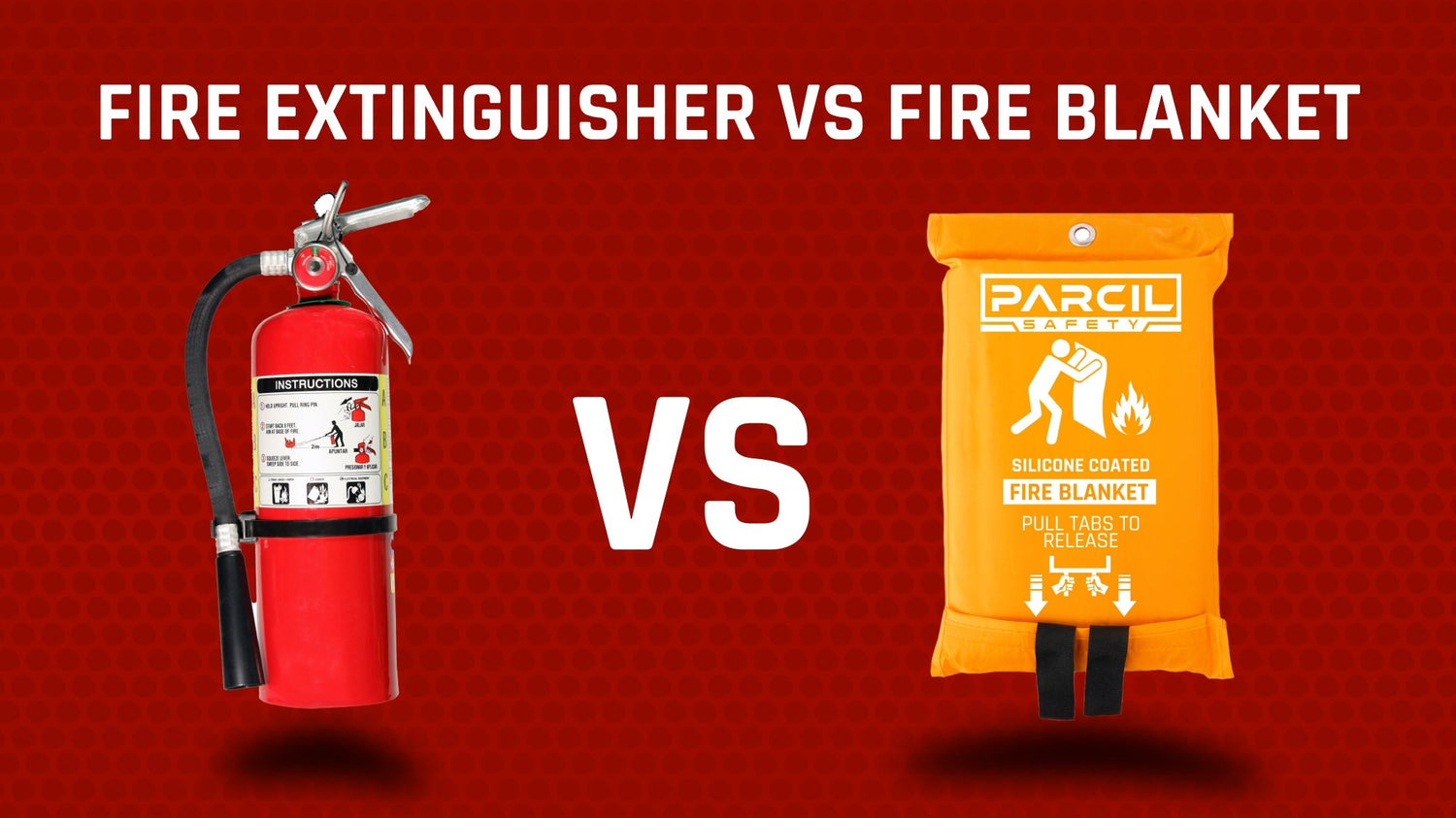Fire Blanket Vs Fire Extinguisher
Before delving into their complementary use, let's briefly review the characteristics and uses of fire blankets and extinguishers:
Fire Blankets:
Designed to smother small fires by cutting off their oxygen supply.
Ideal for extinguishing kitchen fires, clothing fires, and small-scale fires involving combustible materials.
Can also be used to wrap around individuals to protect them from flames.


SHOP NOW
Fire Extinguishers:
Portable devices that discharge fire-suppressing agents to extinguish or control fires.
Available in different types to combat various classes of fires, including those fueled by wood, paper, flammable liquids, and electrical equipment.
Provide targeted suppression and are suitable for larger or multi-class fires.
Where to Use Fire Blankets:
Now, let's explore the specific scenarios where fire blankets excel:
Kitchen Fires:
Fire blankets are particularly well-suited for extinguishing kitchen fires, especially those involving grease or cooking oils.
In the event of a stovetop fire, promptly smothering the flames with a fire blanket can prevent the fire from spreading and minimize the risk of injury.

Clothing Fires:
If a person's clothing catches fire, a fire blanket can be used to quickly smother the flames and protect the individual from further harm.
Wrapping the person in the fire blanket and rolling them on the ground can effectively extinguish the fire while minimizing burns.
Small Fires:
Fire blankets are ideal for containing and extinguishing small fires, such as those caused by electrical malfunctions, combustible materials, or flammable liquids.
Keep a fire blanket in easily accessible locations throughout your home, workplace, or vehicle for quick deployment in the event of a fire.
Blog post by Parcil Safety on How to develop a home fire escape plan?
Where to Use Fire Extinguishers:
Next, let's explore the specific scenarios where fire extinguishers excel:
Multi-Class Fires:
Fire extinguishers are versatile tools capable of combating fires fueled by various materials, including wood, paper, fabric, flammable liquids, and electrical equipment.
Different types of fire extinguishers are designed to address specific classes of fires, so it's essential to choose the appropriate extinguisher for the fire at hand.
Larger Fires:
While fire blankets are effective for small fires, fire extinguishers are better equipped to handle larger or more widespread fires.
In situations where a fire has grown beyond the scope of a fire blanket, a fire extinguisher can provide the necessary firepower to suppress the flames and prevent further escalation.
Professional Settings:
Fire extinguishers are often required in commercial and industrial settings to comply with fire safety regulations.
Businesses, schools, hospitals, and other public buildings should have fire extinguishers strategically placed throughout the premises to ensure a prompt response in the event of a fire emergency.
Benefits of Complementary Use:
Now that we understand the roles and uses of fire blankets and extinguishers, let's explore the benefits of incorporating both into your fire safety plan:
Versatility:
By having both fire blankets and extinguishers readily available, you gain versatility in responding to different types and sizes of fires.
Fire blankets are ideal for quickly smothering small fires, while extinguishers are better suited for larger or multi-class fires.
Redundancy:
In emergency situations, redundancy can be crucial for ensuring a swift and effective response.
Having multiple tools at your disposal, including both fire blankets and extinguishers, increases your chances of successfully containing and extinguishing fires.
Comprehensive Coverage:
Different fire incidents may require different approaches to suppression.
By incorporating both fire blankets and extinguishers into your fire safety plan, you can cover a broader range of potential scenarios, from kitchen fires to electrical malfunctions.
User-Friendly Options:
Fire blankets are simple to use and require minimal training, making them accessible to individuals of all ages and abilities.
Fire extinguishers provide a more targeted approach to suppression and can be used by trained personnel to tackle larger or more complex fires.
Implementation Tips:
To effectively incorporate both fire blankets and extinguishers into your fire safety plan, consider the following tips:
Conduct a thorough assessment of your property to determine the most suitable locations for placing fire blankets and extinguishers.
Ensure that all occupants are familiar with the location and proper use of fire safety equipment through regular training and drills.
Regularly inspect and maintain fire blankets and extinguishers to ensure they are in good working condition and ready for use in an emergency.
A good read on How to choose the right safety equipment? by Parcil Safety.
What role does a respirator have in fire safety?
Find out here.
Conclusion:
Incorporating both fire blankets and extinguishers into your fire safety plan can provide comprehensive coverage and enhance your ability to respond effectively to fire emergencies.
By understanding the unique roles and benefits of each tool and integrating them strategically, you can better protect yourself, your loved ones, and your property from the devastating effects of fire.
Remember, preparation is key to fire safety, so take the necessary steps to equip yourself with the tools and knowledge needed to stay safe.





















Leave a comment
All comments are moderated before being published.
This site is protected by hCaptcha and the hCaptcha Privacy Policy and Terms of Service apply.